"He who has a "why" to live for, can endure almost any "how." - Dr. Victor Frankyl, Psychiatrist
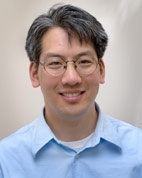 |
| Tom Chau (Bloorview MacMillan Medical Center) |
Tom Chau learned compassion at a very young age. His family instilled in him a strong sense of the importance of contributing to the well-being of others. The need to make a difference. Well, he has certainly made a difference in the lives of children living with disabilities. His technological inventions have made it possible for kids with no mobility in their hands to play music. He's designed devices that make it possible for kids that cannot speak to communicate their thoughts with eye blinks, head turns or hand gestures. His inventions have enabled kids in wheelchairs to fetch something from their closet or under the bed using a joystick or headswitch to control a small robot.
The list of his accomplishments is long and getting longer. His innovation in the emerging field of rehab engineering recently won him the 2005 Young Engineer Award in Canada. What is rehab engineering? Tom says, "…it's about using science and technology to maximize opportunities for individuals with disabilities. Our goal is to create devices that learn about the child and evolve with their needs, rather than casting them into some kind of ‘typical’ mould. It is inherently an interdisciplinary field, where therapists, physicians, educators, social workers and engineers come together to think and work collaboratively." Asked about how the award has changed his life, Tom replied, "The award has served to awaken in me a sense of pride in engineering. It is not that I was ashamed of it, but one doesn't typically think of engineers as playing a role in health care. Over time, my identity as an engineer was becoming a bit diluted as we dealt with more and more issues outside the traditional realm of engineering. However, the award has reaffirmed for me the prominent and important role of engineering in 21st century health care, and particularly rehabilitation. It has also helped increase the visibility of our work and to raise awareness about childhood disability. One can only hope that somewhere down the road it will also help to raise funds for research."
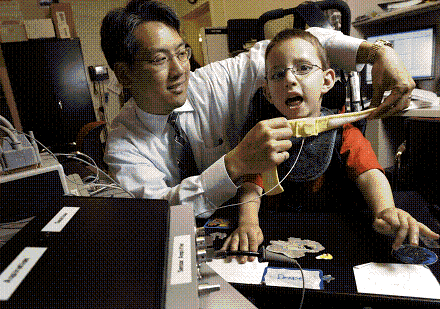 |
| Tom with Deane trying his swallowing device. (Bloorview MacMillan - Photographer - Mike Cassese) |
MY HERO spoke with Tom Chau recently in Toronto, Canada, where he had just returned from paternal leave to welcome his third child. He is a biomedical engineer who impulsively fled the IBM fast-track 6 years ago to start what has become the highly regarded, innovative PRISM LAB, at the Bloorview MacMillan Medical Centre.
What made you become a scientist?
"The scientist title is a new one, so I am still getting used to it. I think my gravitation to the profession stems from my engineering background and interest in devices, machines and computers. As a child, I always wondered about how things work and developed a notorious reputation for irreversibly taking apart household items. In addition to taking things apart, I also liked to build things. I think LEGO must be among the top contenders for favorite toy."
You have created so many things that help kids be kids…do you have a favorite or top several?
"It's hard to pick a favorite. The virtual music instrument would be among the top choices. It was designed to give children who have physical impairments an opportunity to learn and play music. The technology consists of custom developed software, a web cam and a computer. The camera captures the child's movements and the software in the computer transforms movements into musical notes. In addition the child sees an image of him or herself overlaid with colored shapes. By interacting with these shapes, the child is able to play musical notes. By simply moving one's body in space, one is able to create pleasant sounding music. We have designed the instrument such that a child has an opportunity to learn to play increasingly more challenging melodies in time and in the likeness of a desired instrument, such as a piano or flute. In this sense the instrument provides mastery motivation."
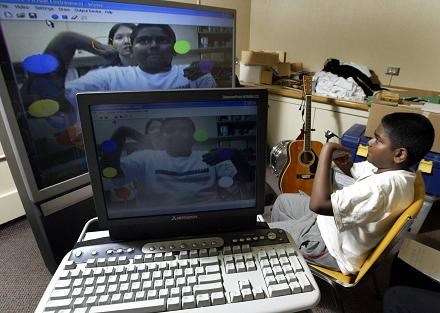 |
| Patient Kajan playing with virtual instrument. (Bloorview MacMillan - Photographer - Mike Cassese) |
"Another favorite is the non-contact, intelligent communication aid. It was designed to facilitate communication when a child loses their ability to speak for a temporary period of time, possibly along with other motor functions. The technology has been implemented on a desktop computer and a tablet computer. In the former case, a touch screen is mounted on a portable pole, like an IV pole, but much sturdier. The screen extends out to a child in a hospital bed. The screen displays a number of pictures representing different messages, such as, "I am cold", "My head hurts" or "I want Mommy." Depending on the child's function, he or she may select a desired message in a number of different ways. These include touching the screen, activating a single switch (such as a button or eye-blink switch) or using gestures (e.g., drawing a circle with one finger). The idea is that the technology will allow a child to continue communicating even though their function may be declining."
How does your lab's state of the art prosthetic hand work and who can use it?
"The prosthetic hand you refer to is powered by muscle sounds. When you voluntarily contract your muscles, they vibrate. Using miniature microphones, this vibration can be measured as sound at the skin surface. We take these sounds and send them into a mini-computer embedded in the hand. This mini-computer is "trained" to recognize the specific signals of each individual user. In this sense, the hand learns about the child's unique muscle activations. Once trained, the mini-computer then deciphers new sounds that it hears and tries to understand what the user is intending to do. Right now, we have only created a number of prototype prostheses. We are hoping that in the future, people who currently use prostheses, as well as those who have never used a powered prosthesis before, will be able to take advantage of this type of technology."
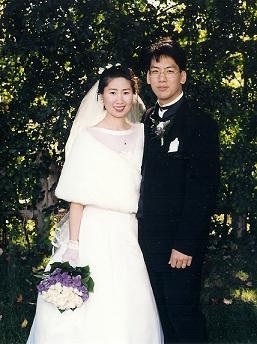 |
| Grace & Tom at their 1997 wedding (Tom Chau) |
What would you do or say if you had the attention of the world for 10 minutes?
"This is a tough question. I think I would draw attention to the fact that our time on this world is limited, not to be overly morbid, but to challenge people to live with urgency. We are always in the mode of putting things off until "tomorrow." Charity and service to others should not be held back, but delivered at every first opportunity, for "tomorrow" we may not have such an opportunity. When we think about our lives in these finite terms, we tend to value others more, be quicker to forgive, be more tolerant of others and to be more accepting of differences."
Tom Chau certainly seems to be living with urgency and many, many people are glad he is and are benefiting from his tremendous drive and enthusiasm for scientific discovery. What brings him joy? "I enjoy working with children and families, graduate students and interdisciplinary teams. The greatest joy is to see a smile on a child's face when he or she is able to participate in something previously inaccessible. I also love spending time with my kids, just doing silly things like playing house or pretending we are on a boat." What makes him laugh? "The innocent questions and explanations that children come up with never fail to make me laugh. Partly, the laughter is a celebration of their purity of heart and innocent thought and partly it is a realization of how complicated, we as adults, have made our lives."
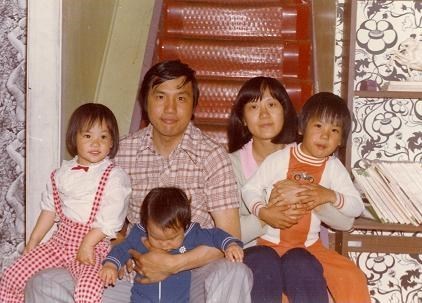 |
| Left to right: sister Vicky, Dad Frank, brother James, Mom Irene, and Tom Photo from Tom Chau |
Asked about heroes, Tom replied: "I think I have a number of different heroes. One would be my father. He is also an engineer and always applied science to solving real life problems. However, the most important thing I learned from him is to treat all individuals with equal respect. As a successful entrepreneur, my father never overlooked the humblest individuals, taking much interest in their lives and well-being. Another one of my heroes is Reverend Tom McKillop who was recently inducted into the Order of Canada for his pioneering work with young people. He is a role model leader for me personally, a living example of "Servant Leadership."
How do parents get kids interested in science? "The Magic School Bus series of books is an excellent source of digestible science for children. Further, a trip to the local science centre usually does a great job at stimulating interest. My own children thoroughly enjoy exhibits at the science centre. I think it is also important to ask questions and to encourage children to wonder why things are the way they are. I think children are naturally inquisitive and it's important for parents and teachers to support that explorative development."
Part engineer, part toymaker, Tom Chau's inventions give kids undergoing severe health crises an opportunity they might not otherwise have: the chance to just be a kid. To paint with no hands, to sing with no voice, to play. And when the very sick child loses the ability to speak, to reach out to his or her mom or dad, when their state of decline severs all ties to the outside world and that child begins to die, Tom Chau's inventions give them the ability to not be so alone, to not be so afraid. To these kids and to this writer, Tom Chau is much much more than a scientist. He is a god-send. He is the best of men. He is a hero.
Page created on 8/7/2007 8:18:14 AM
Last edited 1/9/2017 11:13:11 PM
Tom Chau, Ph.D., MASc., BASc.
Graduate Department Appointments:
Rehabilitation Science
Institute of Bio Materials and Biomedical Engineering
Research Sites:
Bloorview MacMillan Children's Centre (MacMillan Site)
Research Areas:
Intelligent systems for paediatric rehabilitation (automatic pattern recognition systems, automatic pattern discovery systems)
Rehabilitation technology including novel human-machine interfaces, assistive device development, physiological signal analysis, prosthetic control strategies, dynamics of pathological movement. Populations of interest include children and youth with physical and developmental disabilities.
Biosketch: Tom Chau is coordinator of intelligent systems research at Bloorview MacMillan Children's Centre, the largest paediatric rehabilitation facility in Ontario. He received his PhD degree from the University of Waterloo in Systems Design Engineering, MASc in Biomedical and Electrical Engineering and the BASc in Engineering Science, both from the University of Toronto. Tom worked in industry for several years prior to joining the Centre in 1999 and holds professional awards from IBM Canada. At Bloorview MacMillan, he works with an interdisciplinary team including occupational therapists, a music therapist, a childhood education specialist, and a neuropsychologist. His current research interests revolve around the design and evaluation of intelligent computer systems to improve the overall quality of life of children with physical and developmental disabilities.
